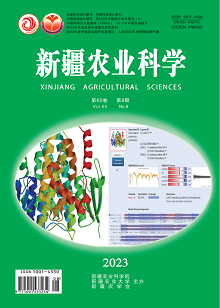【Objective】 To clarify the effect of spraying pendimethalin on the main growth and development and physiological indicators of Solanum nigrum L.【Methods】 Plant height, stem thickness, leaf area, fresh weight of above-ground parts, chlorophyll content, soluble sugar content and soluble protein content of Solanum nigrum L.were measured at spraying different concentrations of pendimethalin (0, 300, 600, 900, 1,200,1,500 g.a.i/hm2) at different times (5, 10, 15, 20, 25,30 d) after spraying pesticides using the greenhouse pot method.【Results】 The growth and physiological indicators of Solanum nigrum L.showed an overall decreasing trend with increasing dosage of pendimethalin, and the most serious effect was observed when the concentration was 1,500 g.a.i/hm2.Among them, on the 30th day of treatment, the plant height, leaf area, and fresh weight of the above-ground part of the Solanum nigrum L.were the smallest, which were significantly different from that of the control, which were 2.02 cm, 0.32 cm2, and 0.47 g, respectively.The stem thickness was significantly thicker compared to the control at 15 d before treatment, and with the later growth of Solanum nigrum L.the control stem thickness was significantly higher than those of the treatments.Compared with the control, the soluble sugar, soluble protein, and chlorophyll content reached the minimum 3.12, 0.06, and 0.62 mg/g at the 30th day, and decreased by 7.82, 0.05, 1.05 mg/g, respectively.【Conclusion】 Pendimethalin has a significant effect on the main growth and development and physiological indexes of Solanum nigrum L., and the overall physiological and biochemical indexes show a decreasing trend with increasing dosage of concentrations, and the most serious effect has been observed at high concentrations.

